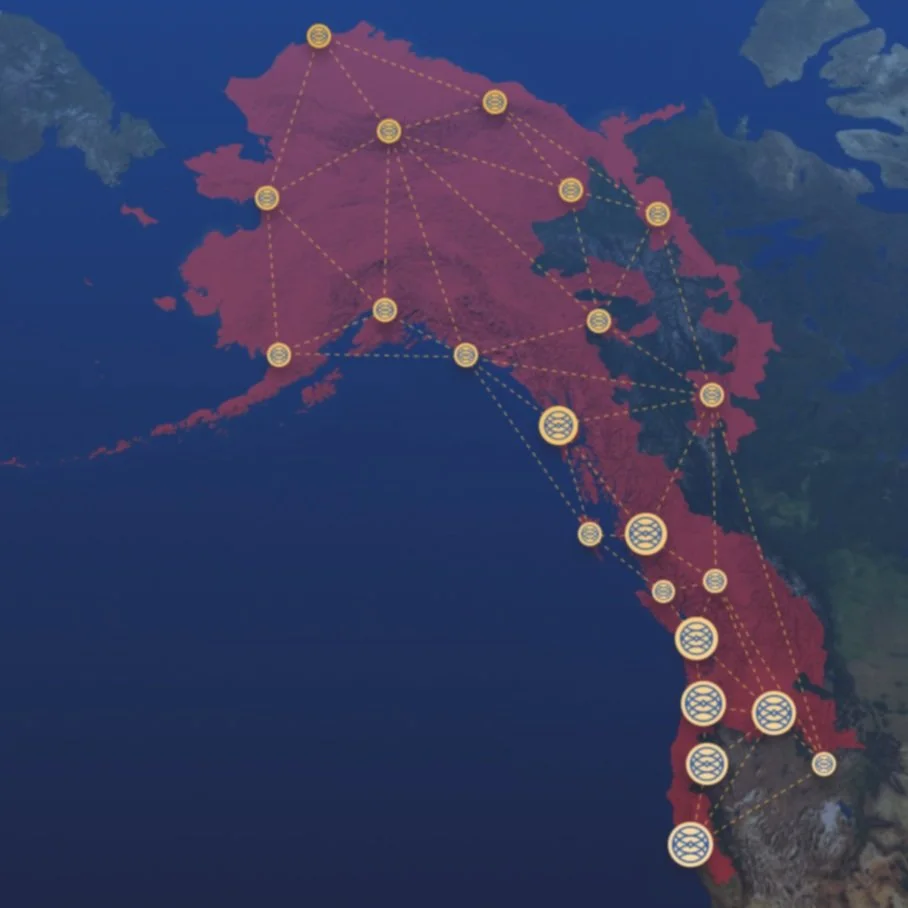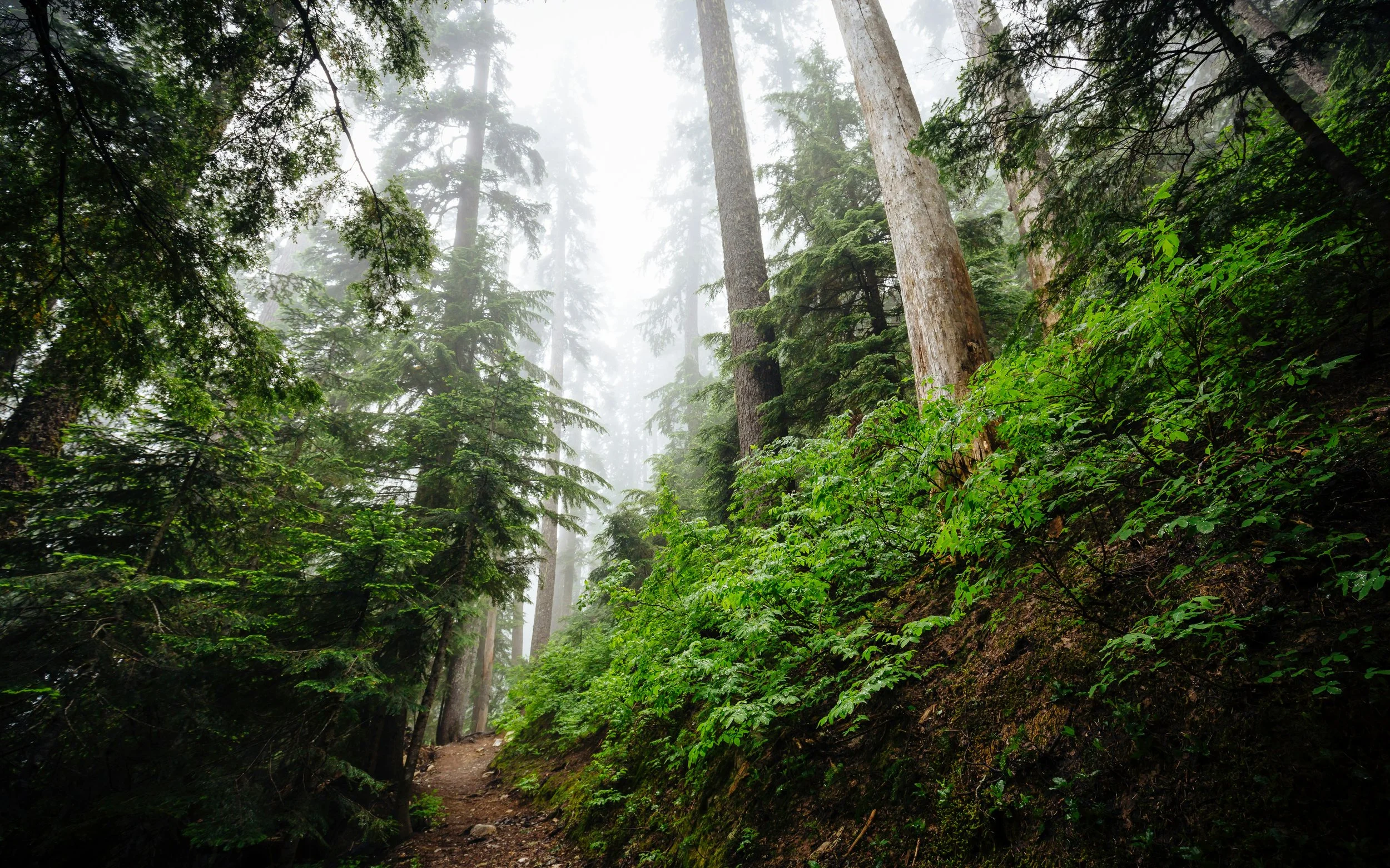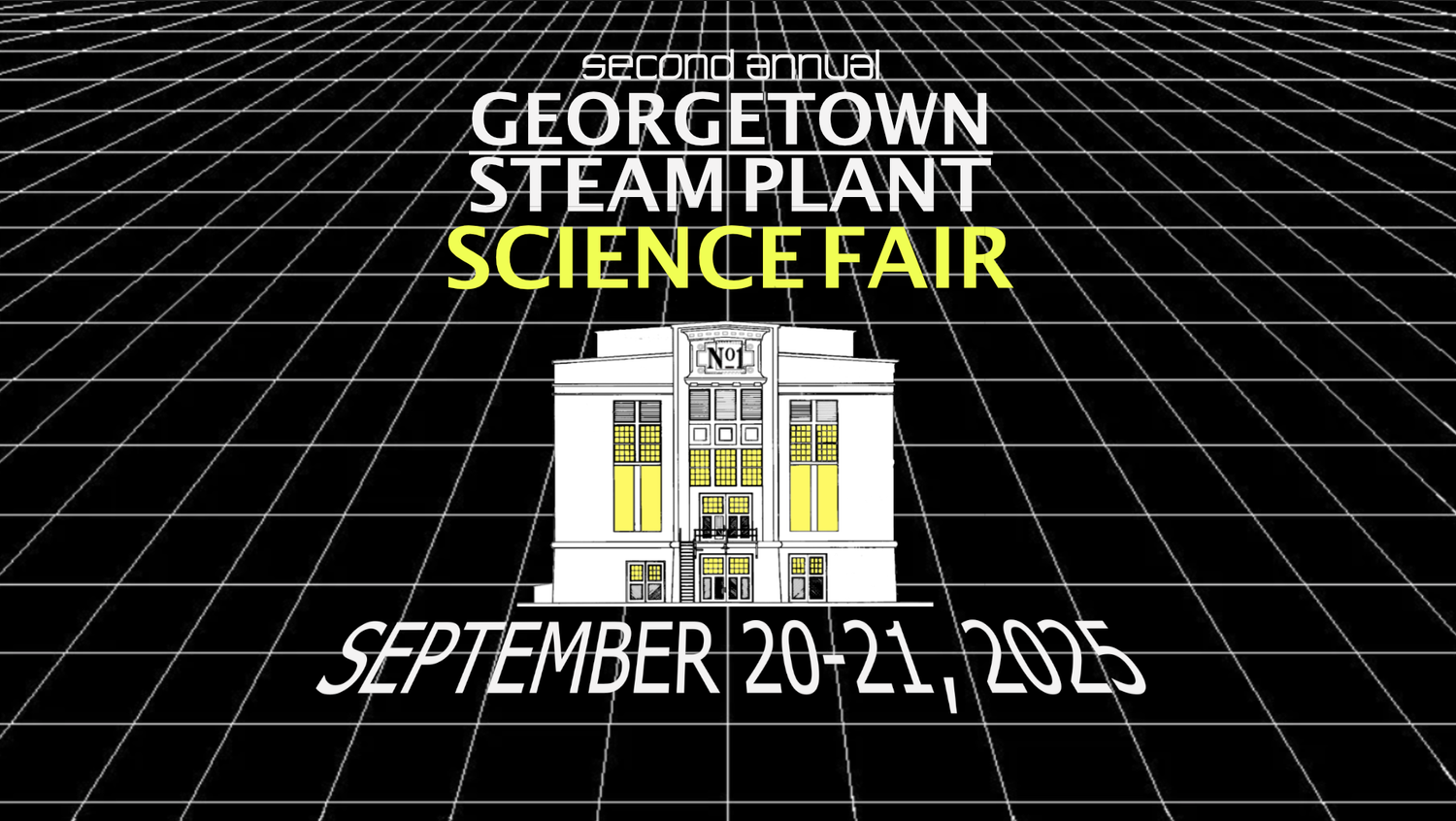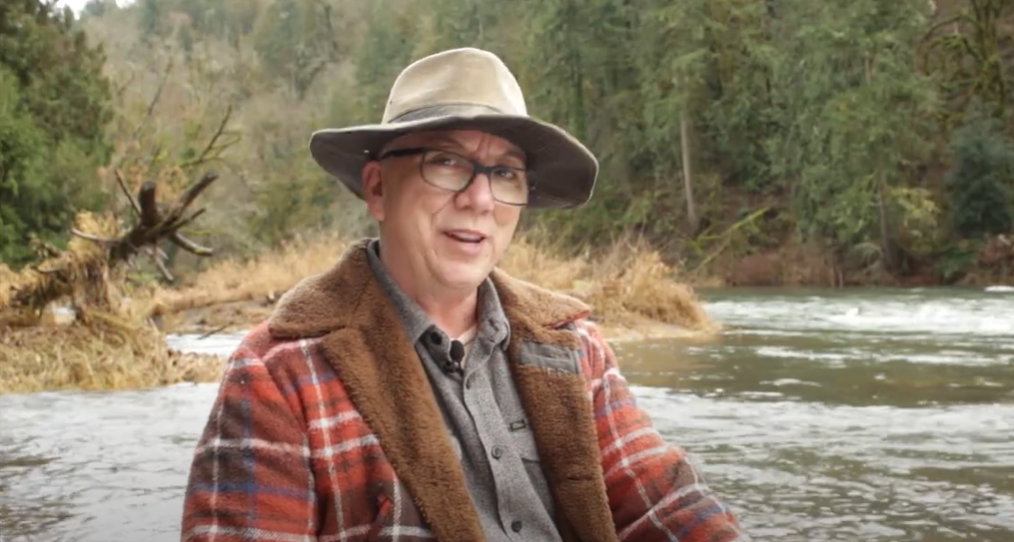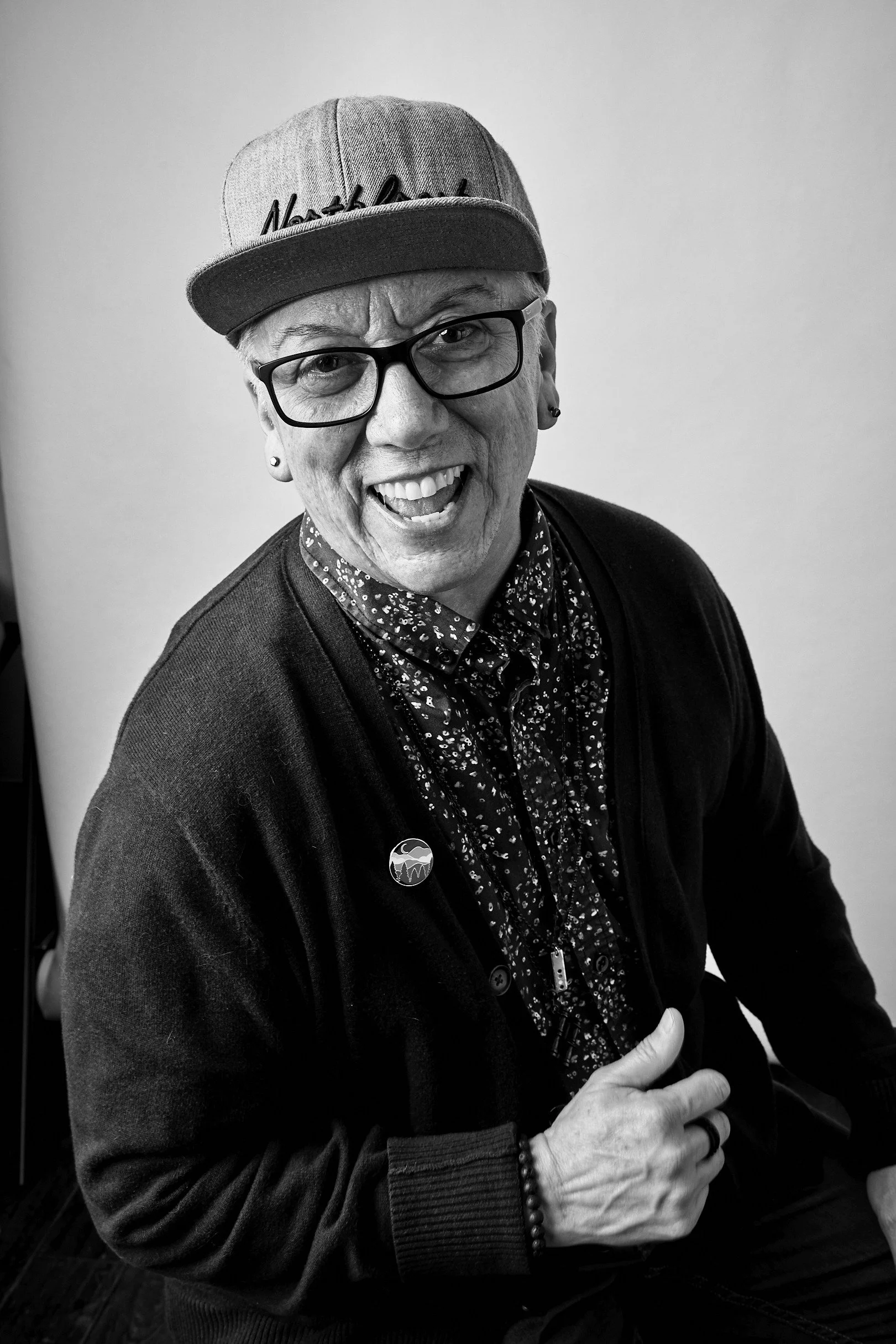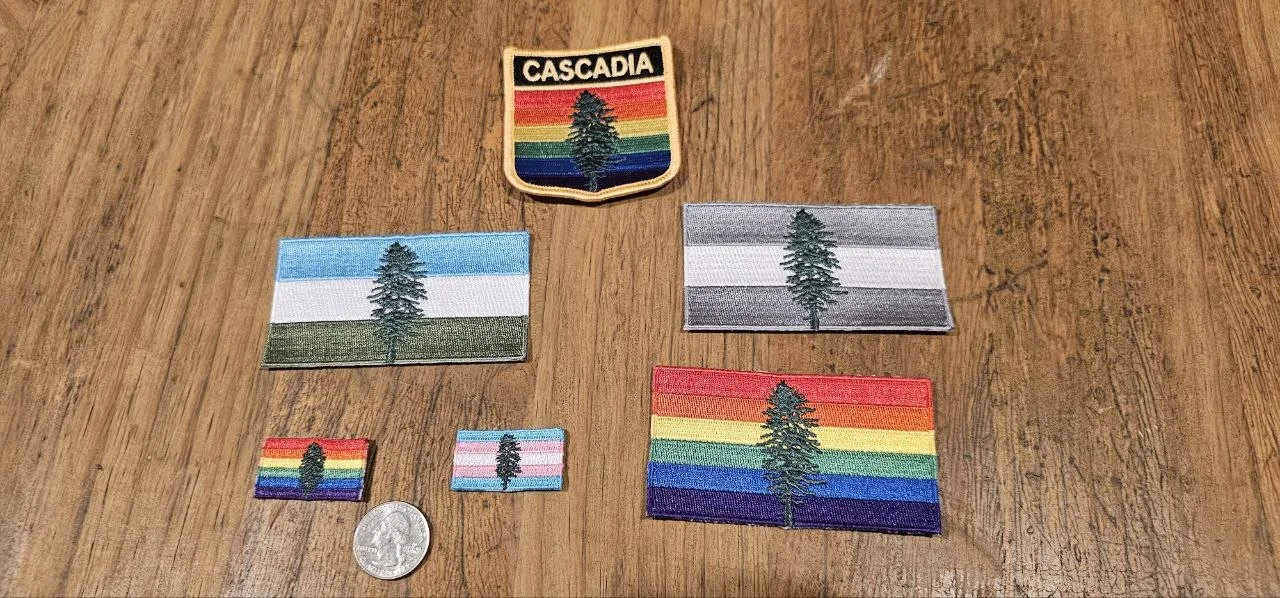fter more than a decade, the Turtle Island Bioregional Congress (TIBC) is returning, this time to the Cascadia Bioregion, on the ancestral lands of the S’Klallam and Coast Salish Peoples near Port Townsend, Washington. From September 14–20, 2026, hundreds of organizers, educators, artists, and ecological stewards will gather for TIBC11, a living experiment in bioregional self-governance, culture, and renewal.
No Kings Day 2.0: Power Belongs to the People
On October 18, 2025, nearly 7 million people across the world stood up with a single message: No Thrones. No Crowns. No Kings. From small towns to global capitals, from high schoolers to elders, a movement rooted in love, resistance, and collective memory swept the streets of more than 2,700 cities in one of the largest single-day protests in U.S. history.
Cascadia Poetry Festival 2025
The Cascadia Poetry Festival returns to Seattle for its ninth year, inviting poets, artists, and culture-makers to explore what it means to create place-based poetry in a time of ecological urgency and cultural transformation. Organized by Cascadia Poetics Lab, this four-day gathering brings together voices from across the bioregion for workshops, readings, panels, and performances rooted in the spirit of Cascadia—where the watersheds speak, the stories run deep, and the arts offer both refuge and revolution.
Bioregioning How to Thrive Where We Live: Tuesday, September 30 at 10am on Zoom
Our executive director, Brandon Letsinger is excited to be one of the panelists for this event: Bioregioning - How to Thrive Where We Live: Tuesday, September 30 at 10am on Zoom along with Lyla June and Samantha Power, and hosted by Rob Dietz, Resilience.org and the post-carbon institute.
Cascadia Innovation Corridor 2025: Building a Bioregional Future Together
The Cascadia Department of Bioregion is honored to participate in this year’s Cascadia Innovation Corridor Conference, a cross-border gathering that brings together business leaders, policymakers, and visionaries from across Oregon, Washington, and British Columbia. As we step into a future shaped by bold innovation, the Department is proud to advocate for a bioregional approach to regeneration, infrastructure, and identity within this growing megaregion.
Break the System: 2025 Georgetown Steam Plant Science Fair
This fall, the Cascadia Department of Bioregion will proudly join innovators, artists, youth, engineers, and makers at the second annual Georgetown Steam Plant Science Fair, a celebration of SHTEAM (Science, History, Technology, Engineering, Art, and Math) and a rallying cry for system-wide transformation.
Rain Shadow Poetry Festival 2025: Language and the Land
Since 2017, Rain Shadow Poetics Lab (formerly Cascadia Poetics Lab – Canada) has been bringing world-class poetry and bioregional poetics to the Comox Valley. This summer, in collaboration with Watershed Press, the Lab returns with the Rain Shadow Poetry Festival 2025, a powerful weekend celebration of language, land, and the poetic imagination. From Friday, August 22 through Sunday, August 24, the village of Cumberland, British Columbia will welcome poets, artists, and thinkers from across the Cascadia bioregion for a rich series of readings, workshops, and lectures.
Bioregional Confluencing 2025: Ambling Toward Planetary Bioregional Congressing
As we face mounting ecological, social, and political challenges, one thing has become increasingly clear: top-down systems alone won’t save us. Regeneration begins from the ground up—through people organizing in place, building trust, and cultivating the relationships that make life flourish. That’s the spirit behind Bioregional Confluencing 2025, an ambitious global initiative to revitalize bioregional gatherings and reclaim the practice of congressing—an ancient and future-facing model of participatory governance.
An Evening at the Georgetown Steam Plant: What is Cascadia?
On September 20–21, 2025, join us at the historic Georgetown Steam Plant for a powerful talk with Brandon Letsinger, a longtime champion of Cascadia and founder of Cascadia Now! and the Department of Bioregion. In this live presentation, Brandon will share his two-decade journey in grassroots organizing, the lessons he’s learned from movement-building, and the bold vision behind Regenerate Cascadia—a growing network of networks working to build regenerative systems at a bioregional scale.
Cascadia Cooperative Conference 2025
This summer, cooperative leaders, organizers, visionaries, and values-aligned businesses from across the Cascadia bioregion will gather in Seattle for the first-ever Cascadia Cooperative Conference (CCC)—a landmark event dedicated to deepening the roots and expanding the reach of the cooperative economy in the Pacific Northwest.
DWeb Camp Cascadia: A Weekend of Connection on Salt Spring Island
We’re excited to invite you to the first-ever DWeb Camp Cascadia, happening August 8–10, 2025 at the beautiful Salt Spring Island Farmers’ Instituteumbia. This is more than a tech gathering. It’s a weekend for planting seeds—ideas, relationships, and experiments—that will ripple beyond the island and into future decentralized networks. Whether you're deep in the DWeb world or just D-curious, this is a space for you.
What’s Next for Cascadia Department of Bioregion? Welcome Drew Alcoser Llano
Filming on location at Kalama River, a 2025 update for supporters of Cascadia Stack
Welcome Drew, we are thrilled to have you on board, adding to the Cascadian community of care!
The Community Steward works to build networks, onboard, and support efforts across the bioregion. This includes project coordination; supporting events, and local projects. Drew (pronouns: they/them) will also assist in the development of products at the Cascadia Dept. of Bioregion store and website management.
Why Bioregionalism Matters to Me
According to Drew, they can readily pinpoint the need for bioregionalism as a means to bridge humanity within a climate adaptation frame. “The mission of Cascadia Department of Bioregion is crucial at this precarious intersection of extreme capitalism, over-extraction, and natural resource depletion. I am grateful to be a part of this movement because it feels so inclusive, and gives me a sense of belonging. In this role, I will foster an ecological identity in my interactions with others; knowledge-rich and asset-based, which will be empowering at a time when democracy is in peril. People are looking to come together for collaboration and to find joy”
What I’m Bringing to This Role
Drew’s experience in change management, forest advocacy, social entrepreneurship, and climate justice will bring a courageous spirit into the next chapter of the Cascadia Movement.
With degrees in social science and organizational leadership, Drew recently completed a Master’s Certificate in Social Innovation & Entrepreneurship at Portland State University, which led to the 2023 founding of Cascadia Stack, offering– (and training facilitators to become peer support leaders for) climate grief meetings. Drew also advocates for forests in SW Washington with Alliance for Community Engagement (ACE) and is a member of the steering committee for the Portland chapter of Transformational Resilience Coordinating Network (TRCN). As a membership director and volunteer, at other organizations, Drew has had years of experience in different systems and databases. Drew’s connections to individuals, movers, shakers, and the business and entrepreneur community has influenced their approach and sharpened their listening skills.
What I’m Most Excited to Support
Besides being an unapologetic systems-nerd, Drew said, “The one aspect of this role at C-DoB is the opportunity to help members find their own path and pace in the Cascadia Movement.”
“I am really looking forward to working with rural areas and welcoming people of color, and differently abled folks, and when capacity and organizational bandwidth increases, providing language access (including ASL) into the Movement’s spaces.”
As a 6th year resident of Cascadia, Drew has become an active climate advocate, a lifelong student and consumer of climate resilience content adding that “expressiveness is the thread that binds us to one another and how many people new to the Movement will find us. These paths are especially important to nurture as we enter into what Joanna Macy termed The Great Turning. I will be paying close attention to the talents, and gaps in community bonds that can bring people together based on their interests, hobbies, passions, and learning journeys. I would LOVE to form a solarpunk guild that has both an innovation aspect and a strong storytelling / art & creativity blend!”
Invitation to Connect
Join us in welcoming Drew! Ask them about how “mending past wrongs while seeking a just transition to a resilience-based bioregion will sustain a courageous spirit into the next chapter of the Cascadia Movement.”
Send a welcome message to Drew, here: community@cascadiabioregion.org
Also— see Cascadia Stack on Instagram @cascadia_stack
Welcoming Ashley Bonn to the Cascadia Department of Bioregion
Cascadia Pride Merch Is Back — New Patches, More Colors, Same Doug
We’re excited to announce that Cascadia Pride merch is officially back in stock—just in time to keep the spirit of pride and place flying strong as we move through summer and beyond. June is nationally recognized as LGBTQ+ Pride Month, commemorating the Stonewall Uprising of 1969—widely considered the spark of the modern LGBTQ+ rights movement. While Pride is often celebrated in June, queer joy, resistance, and identity are year-round—and so is our commitment to honoring the diversity of our Cascadian community. That’s why we’re thrilled to share a fresh restock of our Cascadia Pride patches, along with several new additions that center identity, inclusion, and bioregional belonging.
No Kings Day 2025: Cascadia Rises in Defense of People and Place
On June 14, 2025, more than 70,000 people flooded the streets of Seattle to join one of the largest demonstrations in the city’s history. The No Kings Day protest, part of a national day of action in over 80 cities, brought people together in response to the Trump administration’s militarization, ICE raids, attacks on public programs, and deepening disregard for human rights and constitutional limits.
Celebrating Cascadia Day 2025: A Living Culture Rooted in Place
Each year on May 18th, people across the Pacific Northwest and beyond gather to honor Cascadia Day—a celebration of bioregional identity, cultural diversity, ecological reverence, and community resilience. For me, this year’s Cascadia Day felt like a homecoming. Not just to a place, but to a purpose.
Highlights from the 2025 Cascadia BioFi Conference
From May 16–18, 2025, over 250 visionaries, organizers, artists, funders, and culture-shapers gathered at the historic Georgetown Steam Plant in Seattle for the inaugural Cascadia BioFi Conference—a gathering rooted in the question: How do we regenerate an entire bioregion?
Cascadia Day is Coming! May 18
We're hiring! Cascadia Organizer & NonProfit Program Officer
We’re hiring! The Department of Bioregion is seeking a Cascadia Organizer to support the growing Cascadia Movement, and a Nonprofit Program Officer to help steward programs, projects, and landscape teams across the bioregion. If you’re passionate about bioregionalism, community resilience, and working across watersheds, we’d love to hear from you.
A Continental Bioregional Congress is in the Works for 2026! - Suggest a site Location by April 8th
For the first time in more than 15 years, bioregionalists from across North America are coming together to plan a Continental Bioregional Congress — a gathering of organizers, artists, land stewards, and community leaders from across the U.S., Canada, and Mexico. If you know of a good site - make sure to recommend it using the survey by April 8th!




